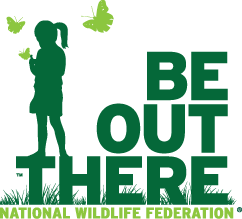prairie notes #37: Winter Solstice
Prairie Notes are monthly photo/journal observations from Tandy Hills Natural Area by Founder/Director, Don Young. They include field reports, flora and fauna sightings, and more, mixed with a scoop of dry humor and a bit of philosophy. They are available free to all who get on the FOTHNA email list.
Winter Solstice
Prairie Notes #37
December 18, 2009
1) Solstice Soapbox
2) The "Heard" is Hurting
3) Stella Rowan Prairie
4) Black-tailed Prairie Dogs Lose Protection
5) The Amazing, Delightful & Improbable Compass Plant
6) A Thousand and One Prairies
7) Green Spaces Improve Health
8) Ecology & Faith
9) Getting Kids Outdoors
10) Lights. Camera. Action. Prairie!
11) Elaine Taylor's "Wind" Sculptures
1) Solstice Soapbox
The past 30 days of rain, wind, cold, holidays and shorter days have kept me, and most of you, from visiting Tandy Hills Natural Area. I don't know about you but I'm getting cranky, and a few pounds heavier. Winter Solstice doesn't arrive until December 21st, but wintry weather is already here. I miss my daily dose of prairie but the cozy warmth of the "in of doors" is a hard spell to break in bleak December.
But that's OK. The prairies and woodlands will still be there when we again desire their special pleasures. Right? Not always, as you will read in some postings below. "Eternal Vigilance", is more than a cliche'. It is Rule #1 of the the Nature Lovers & Defenders Creed, or it should be.
My personal guru and fellow cranky guy, Edward Abbey, wrote extensively on this topic. Answering his own question about why we need wilderness he wrote:
“We need wilderness whether or not we ever set foot in it. We need a refuge even though we may never need to go there. We need the possibility of escape as surely as we need hope; without it, life in the city would drive all men (and women) into crime, drugs or psychoanalysis.”
Ed Abbey
Tandy Hills and other, similar urban green spaces, may not qualify as "true wilderness". They don't have large mammals that can eat us, but they're a close enough approximation and are vitally important, especially in big cities. We need them to be there even if we are not. Accessible wilderness and green space are fundamental elements of civilization and healthy, livable cities. Manicured parks are OK but not enough. Abbey again:
"Wilderness is not a luxury but a necessity of the human spirit."
--Down the River (1982)
Despite what I know to be true about threats to the natural world, I make a Herculean effort to keep these here Prairie Notes uplifting and inspirational. This time around, however, in the interest of your education, my crankiness got the better of me. Several special places are endangered and need your attention. Please skip #2 - 4 if you prefer to read only lighthearted reports.
Bright color is in short supply at THNA in December.
2) The "Heard" is Hurting
The Heard Natural Science Museum & Sanctuary, a 289 acre preserve in McKinney, Texas, needs your help. The North Texas Municipal Water District is suing The Heard for eminent domain. They want to put a sewage line through the prairie/wetland sanctuary that would cause short and long term damage. Please visit the website today and Sign the Petition urging NTMWD to find a different route. It's fast and easy.:
3) Stella Rowan Prairie
A good local example of what can happen without "Eternal Vigilance" can be found at the Stella Rowan Prairie in south Fort Worth. Because of its unusual location next to a highway and a former state school few people know it exists. This 70 acre - never plowed - prairie has the same rich variety of plants and wildlife as Tandy Hills but has been severely compromised by gas drilling and subsequent pipeline operations. Years ago, the Rowan family donated the property to the state stipulating it as a wilderness area. The current managers of the property have ignored the stipulation and plan to further develop the property. I'll keep you posted.
Read more about Stella Rowan on page 2 - 3 of this NPSOT newsletter from 2008:
http://www.npsot.org/NorthCentralTexas/Newsletters/NCNPSOT-2008-jun.pdf
4) Black-tailed Prairie Dogs Lose Protection
Prairie Dogs, one of the most adorable yet maligned of prairie wildlife recently lost federal protection. Already devastated by habitat loss and plague, this new ruling does not bode well for these creatures. Adding insult to injury, the EPA recently approved the poison Rozol that had previously been banned for use on prairie dogs. Rozol also kills other unsuspecting wildlife, including eagles, causing incredible suffering before death. Learn more about this tragedy from the Wild Earth Guardians website:
http://www.wildearthguardians.org/library/paper.asp?nMode=2&nLibraryID=815
Read more about the Prairie Dog Ecosystem Project at the Wild Earth Guardian website:
http://www.wildearthguardians.org/Wildlife/ProtectingEndangeredSpecies/P...
Photo Credit: Charlie Riedel / Associated Press
5) The Amazing, Delightful & Improbable CompassPlant
"What a thousand acres of Compass Plant looked like when they tickled the bellies of buffalo is a question never again to be answered, and perhaps not even asked."
--Aldo Leopold, A Sand County Almanac
The strange and amazing Compass Plant (Silphium lacinatum) a fairly common sight at THNA but buried under pavement and development just about everyplace else, is the subject of the profile at the Human Flower Project website. Mr. Leopold did not anticipate the interest in Compass Plant by the Prairie Keepers of THNA. Dr. Bruce Benz of Texas Wesleyan University, is in the midst of a study of Rosinweed (Silphium albiflorum), a close relative of Compass Plant, at THNA. More on that, later.
http://www.humanflowerproject.com/index.php/weblog/no_direction_home_com...
A joyfully vigorous Compass Plant at THNA.
6) A Thousand and One Prairies
An enterprising fellow named, John Maske, has compiled an atlas of native grasslands in the US and Canada. His website includes links to all of them including Tandy Hills. Previously, the THNA listing linked to a boring City of FW website but now goes to the FOTHNA website. Check out the excellent introduction and the amazing number of web-links. "The sheer number of of these links represents a compelling story in conservation and volunteerism."
7) Green Spaces Improve Health
Yet another study proves that living near a green space has health benefits. According to the Journal of Epidemiology and Community Health,
"Green spaces create oases of improved health... particularly noticeable in reducing rates of mental health, anxiety and depression."
It appears that Mr. Abbey was right. (see #1 above). Read this very interesting report here:
Green space is good for you. Prairies are even better.
8) Ecology & Faith
One of the most frustrating challenges in efforts to preserve a healthy environment is getting faith institutions involved. Bee Moorehead, executive director of, Texas Impact and Texas Interfaith Power & Light has been a trailblazer in this movement. Those groups are devoted to deepening the connection between ecology and faith. Bee was recently interviewed by Forrest Wilder in the Texas Observer.
http://www.texasobserver.org/forrestforthetrees/comments/five-questions-...
9) Getting Kids Outdoors
Nothing is more fundamental to preserving the natural world than getting young people connected to it. The National Wildlife Federation recently unveiled an important initiative to help engage educators, healthcare practitioners, policy makers and the media in persuading kids to spend more time outdoors. Be Out There is an excellent program and an interesting website that I consider essential reading.
http://www.nwf.org/beoutthere/
Also... Check out this helpful guide for teachers and parents from NWF called, Time Out:
http://www.nwf.org/nwfwebadmin/binaryVault/Time%20Out%20with%20BOT%20Act...
10) Lights. Camera. Action. Prairie!
A friend sent me a list of films on tallgrass prairies that show modern conservation methods for our most endangered ecosystem. I have included links to excerpts of them on YouTube:
Where the Sky Began
Last Stand of the Tallgrass Prairie (intro by Lyle Lovett):
America's Lost Landscape, the Tallgrass Prairie:
The late, late Fall show at THNA.
11) Elaine Taylor's "Wind" Sculptures
Prairie Fest 2009 will be remembered for two reasons: #1) It was a huge success and, #2) the WIND. Forty-plus mph wind gusts played havoc with vendors and kept fest organizers on edge. The wind also made life difficult for FW artist, Elaine Taylor, who designed a site-specific work for Prairie Fest. By noon parts of the sculpture had either collapsed or were removed. In case you missed it, you can view some photos of the sculpture before the wind altered it at Elaine's website:
http://www.flickr.com/photos/12323194@N04/with/4168985257/
Come to the meadow to celebrate Winter Solstice and to make sure the meadow is still here.
THNA, December, 2009
















